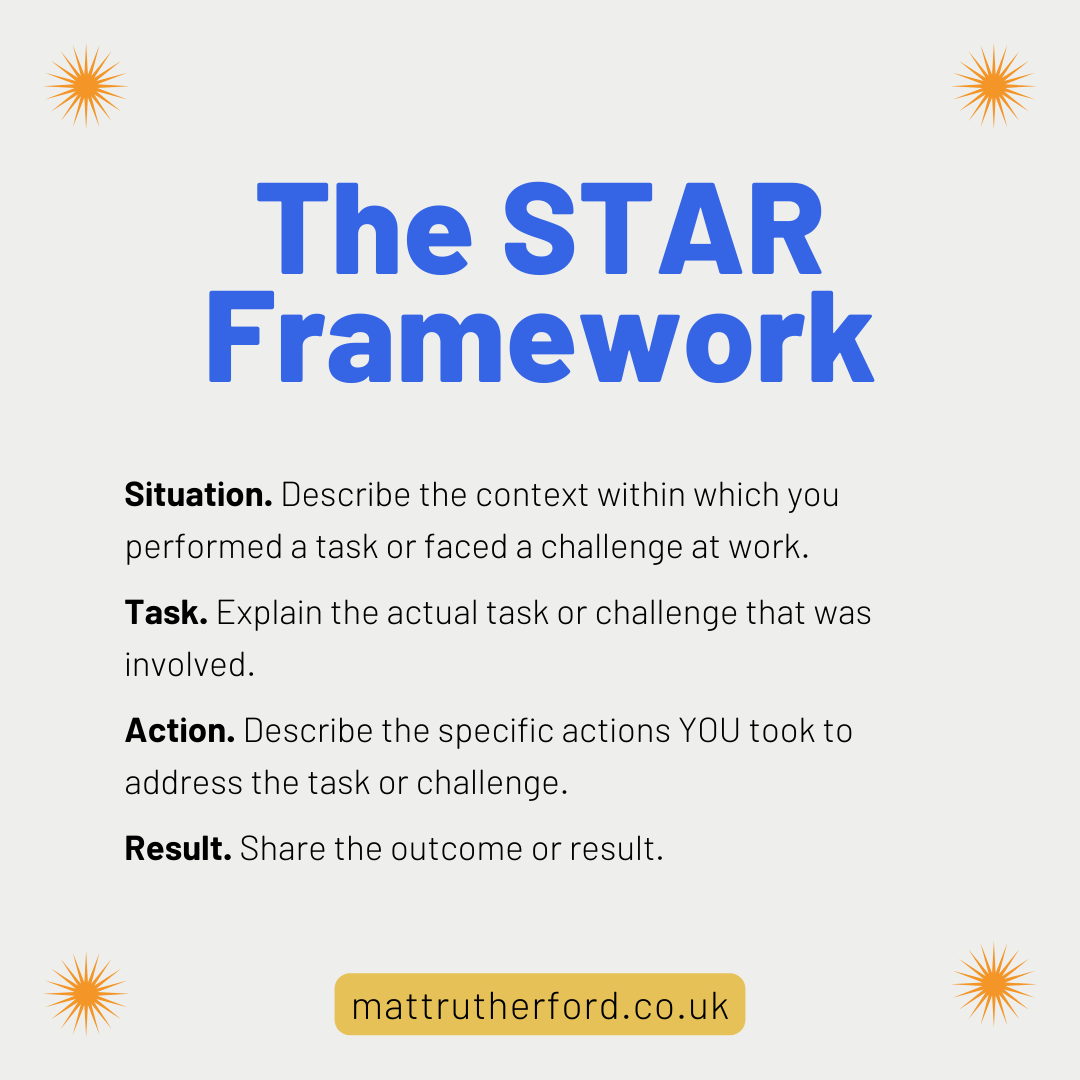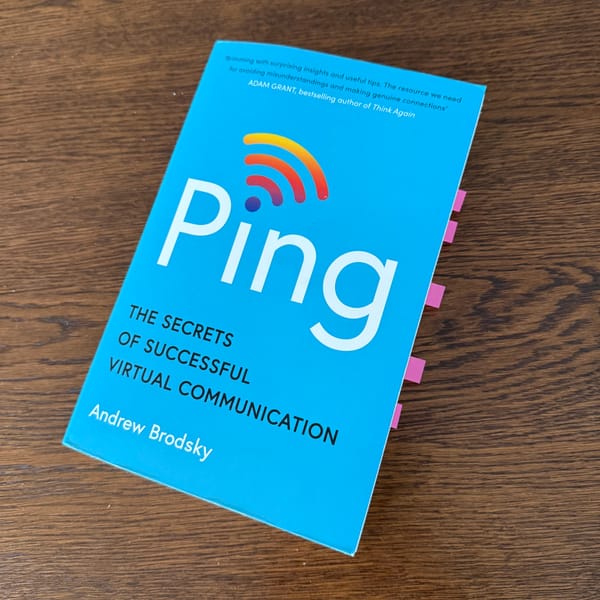The job market is competitive. If you are trying to stand out in an interview, you need to showcase your experience and skills in a limited time.
One effective strategy to ensure you stand out is the STAR model. Using a model like this can help you answer questions, in a structured way and land the job you are after.
I'll explore what the STAR model is and why it is beneficial. Then, I'll share how you can prepare for your next interview using this method.
What is the STAR Model?
The STAR model is a structured way of responding to behavioural interview questions. It stands for:
- Situation. Describe the context within which you performed a task or faced a challenge at work.
- Task. Explain the actual task or challenge that was involved.
- Action. Describe the specific actions you took to address the task or challenge.
- Result. Share the outcomes or results of your actions.

Why is the STAR Model Beneficial?
- Clarity and Organization. STAR helps you provide clear and concise answers. By breaking down your responses into four components, you can stay focused on the key points.
- Showcases Problem-Solving Skills. Hiring Managers want to see how you handle real-life situations. STAR allows you to show how you solve problems and overcome challenges.
- Highlights Achievements. The Result step helps you to quantify your success, and shows interviewers the impact of your efforts.
How to Prepare for an Interview Using STAR
- Identify Common Questions. Research common behavioural interview questions for your field. These often start with phrases like "Tell me about a time when..." or "Give an example of...". You will often get advance notice of the competencies being covered in an interview. Using this inside knowledge will help you prepare.
- Reflect on Your Experiences. Think about past jobs, internships, volunteer work, or school projects. Identify situations where you demonstrated key skills like leadership, teamwork, problem-solving, and adaptability.
- Structure Your Responses. For each experience, use the STAR framework to structure your answers. Write them down and practice delivering them out loud.
Practical Examples of Forming Answers into the STAR Format
Let's go through a couple of examples to see how you can use STAR to structure your responses.
Interview Question 1. Tell me about a time where you had to deal with a difficult customer.
- Situation. In my previous role as a sales associate, we had a customer who was unhappy with a product they had purchased.
- Task. My task was to address the customer’s concerns and find a satisfactory solution to their problem.
- Action. I listened to the customer’s complaint and apologised for the inconvenience. I then offered a refund or exchange. I was also able to give a discount on their next purchase as a goodwill gesture.
- Result. The customer left the store satisfied with the resolution. They even wrote a positive review about our excellent customer service. This incident helped improve our store’s reputation and increased customer loyalty. I learned that even when a problem occurs, there can be a positive outcome.
Interview Question 2. Can you give me an example of a time when you led a project.
- Situation. During my time at university, I was the team leader for a group project in a marketing class.
- Task. Our task was to develop a comprehensive marketing plan for a new product within a tight deadline.
- Action. I organised regular meetings, delegated tasks based on each member’s strengths. This process and ensured everyone stayed on track. I also facilitated communication between team members and resolved conflicts that arose.
- Result. Our team successfully completed the project on time. I was pleased our marketing plan received the highest grade in the class. The professor praised our teamwork and presentation skills
Final Tips
- Practice, Practice, Practice. The more you practice your STAR responses, the more comfortable you’ll become. Practice will help you deliver them naturally during an interview.
- Be Specific. Use specific examples and quantify your results where possible. This makes your answers more compelling and credible.
- Stay Positive. Even if the situation didn’t have a perfect outcome, focus on what you learned and how you grew from the experience.
Using the STAR model can transform your interview responses to clear and impactful.
By preparing thoughtful STAR responses, you can impress your interviewers.







Member discussion